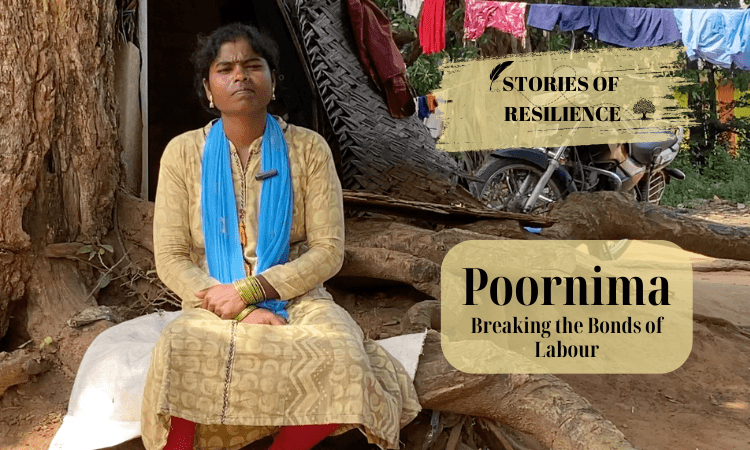Poornima’s Triumph over Bonded Labour: A Story of Resilience
The ‘Stories of Resilience’ Series
By Mariya Rajan
January 11, 2025
Poornima was liberated from bonded labour in 2014, but she immediately faced the formidable challenge of rebuilding her life. She needed to secure employment, find accommodation and obtain essential documents. With determination, she returned to her village to acquire the skills necessary for self-sufficiency. Demonstrating both courage and perseverance, Poornima and her husband set up a small tailoring business. This initiative not only sustained their family but also provided employment opportunities for other freed bonded laborers in their community. By converting her adversities into a platform for financial independence and empowerment, Poornima has exemplified how resilience can drive transformative change, offering a future filled with dignity and hope for herself and others.
Bonded labour, also known as debt bondage, is a form of modern slavery where individuals are forced to work in order to repay a debt. The worker is tricked or trapped into working for very little or no pay, with the value of their work becoming significantly higher than the original sum of money borrowed or advanced. Often, the terms and conditions of the debt are highly exploitative and designed to make repayment impossible, thus perpetually extending the debt and further entrenching the servitude.
In many cases, the debt may also be passed from one generation to the next, binding the labourer and their family to the creditor for decades. The system thrives on coercion, including physical violence or threats, and is often supported by the labourer’s social or economic vulnerability.
Bonded labor is prevalent in various industries across the world and is considered a severe violation of human rights.
In India, bonded labour carries on despite being illegal, under the Bonded Labour System (Abolition) Act of 1976. The practice involves marginalised communities, such as Dalits and Adivasis, or tribals, who are coerced into working under exploitative conditions to repay debts. These debts can be as trivial as loans taken for basic necessities, marriage ceremonies or medical emergencies, perpetuating a cycle of poverty and bondage.
Moreover, the lack of effective enforcement of labour laws and the pervasive influence of local power structures worsen the situation. Many workers are paid meagre wages, work in hazardous conditions without any legal protections, and are unable to break free from the clutches of debt due to the high interest rates imposed by their employers. This system is further reinforced by social exclusion and a lack of access to education, which prevents awareness of legal rights among the vulnerable populations.
In Karnataka, the scenario reflects the larger national context but is further complicated by regional economic activities, particularly in industries like agriculture, brick kilns and silk production. The state has a significant number of bonded labourers working in these sectors, drawn from the state's poorer districts where literacy rates are low and economic opportunities limited.
Karnataka government has initiated several rehabilitation schemes and has been working alongside NGOs to identify and rescue bonded labourers. However, the implementation of these programs often struggles with inadequate funding, corruption and lack of coordination among various governmental and non-governmental entities, making the eradication of bonded labour a challenging task.

